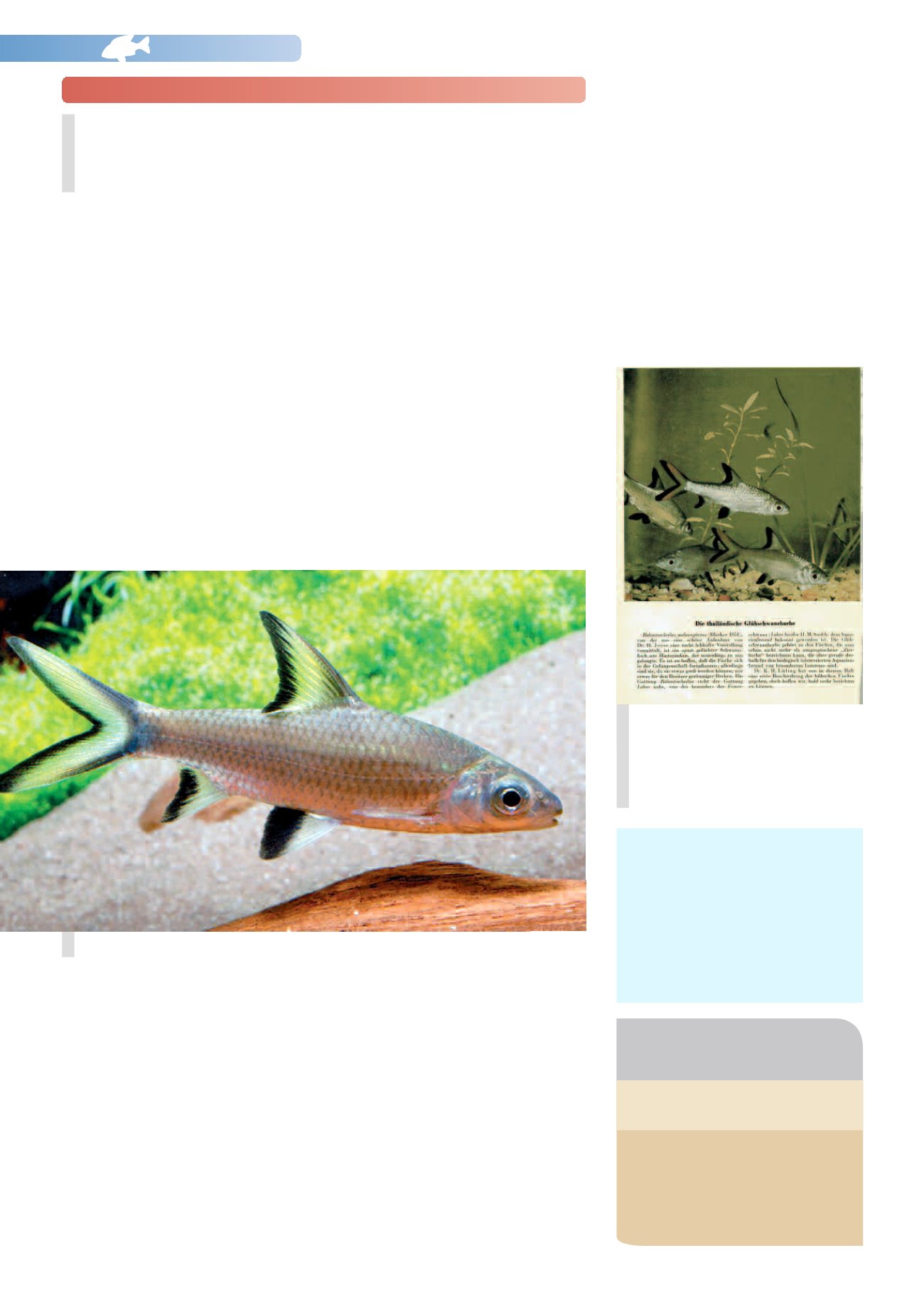
NEWS 110
42
Our aquaria contain lots of fish species that owe their continued existence
on this planet to their importance as ornamental fishes, and which are
extinct or presumed dead in the wild. These species include the Bala
Shark,
Balantiocheilos melanopterus
.
The Bala Shark
by Frank Schäfer
t is unknown why the Bala Shark is so
endangered in the wild. A book on the
endangered fauna of Thailand asserts that
overfishing for the aquarium hobby may
be responsible for the decline in numbers,
but there is no proof of any kind for this.On
the contrary, it is a demonstrable fact that
all the Bala Sharks currently in the
aquarium hobby originate from captive
breeding.
Endangered species
I
first mentioned in the magazines Aquarien-
Terrarien and DATZ in 1959. But these early
reports of importations all probably relate to
B.ambusticauda
.
Bala Sharks are large, peaceful fishes that are
splendid occupants for larger community
aquaria. It should never be forgotten that
they owe their survival to their commercial
relevance. It is thus important that the
species should continue to be traded
extensively in order to remain of interest to
commercial breeders.
Lexicon
Bala Sharks
Balantiocheilos
means ”purse lip”.
melanopterus
means ”black-finned”.
ambusticauda
means ”withaburnt
tail”.
Bala Shark,
Balantiocheilos melanopterus
This is the first published color photo of a Bala
Shark in the German aquarium literature
(Aquarien-Terrarien, June 1959, back cover).
The photo,by Dr.H.Jesse,shows the species
B.
ambusticauda
, probably now extinct, as the
fishes originated from Thailand.
.
Two very similar species
Until recently (2007) it was thought that
there was only one species of Bala Shark,
namely
Balantiocheilos melanopterus
(the
genus name is often spelled incorrectly with
-us at the end). Then scientists Ng and
Kottelat described a second species,
B.
ambusticauda
. The two species cannot be
toldapart fromone another as juveniles;only
in adult specimens (
B. ambusticauda
grows
to 20 cm long,
B.melanopterus
35 cm) is there
an obvious difference in head form (any one
who is interested is referred to the original
description of
B. ambusticauda
). But
differences between
B. ambusticauda
and
B.
melanopterus
in the coloration of the anal
and ventral fins mentioned in the
description are incorrect, as they cannot be
seen in historic photos of
B.ambusticauda
.
B. ambusticauda
originates (or used to) from
the middle and lower Mekong and Chao
Phraya basins (past imports came from
Thailand),but the species is now regarded as
most probably extinct.
B. melanopterus
comes from Malaysia, Borneo, and Sumatra,
where populations are in dramatic decline.
All aquarium stocks since 1980 have been
captive-bred and derive from fishes
originally imported from Indonesia.
The first importation of the Bala Shark to
Europe took place in 1955 via the
Tropicarium in Frankfurt, and the species is
References:
Lüling,K.-H.(1959):
Balantiocheilus melanopterus
(Bleeker 1851).Aquarien-Terrarien 6 (6):162-163
Mecke,K.(1959):
Balantiocheilos melanopterus
Bleeker.Die Aquarien- undTerrarienzeitschrift
(Datz) 12 (6):173-174
Ng,H.H.&M.Kottelat (2007):
Balantiocheilos
ambusticauda,a new and possibly extinct species
of cyprinid fish from Indochina (Cypriniformes:
Cyprinidae).Zootaxa 1463:13-20


